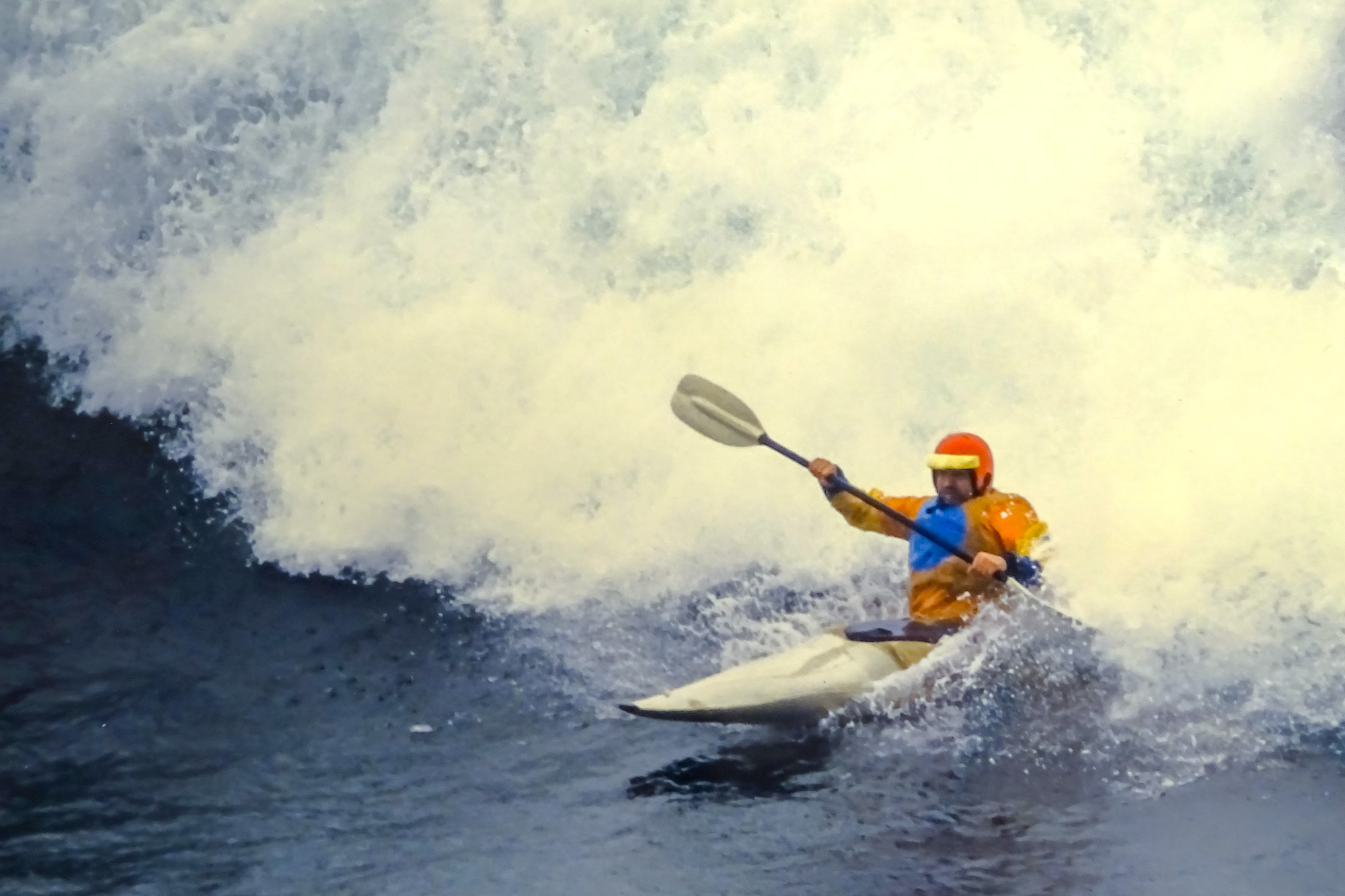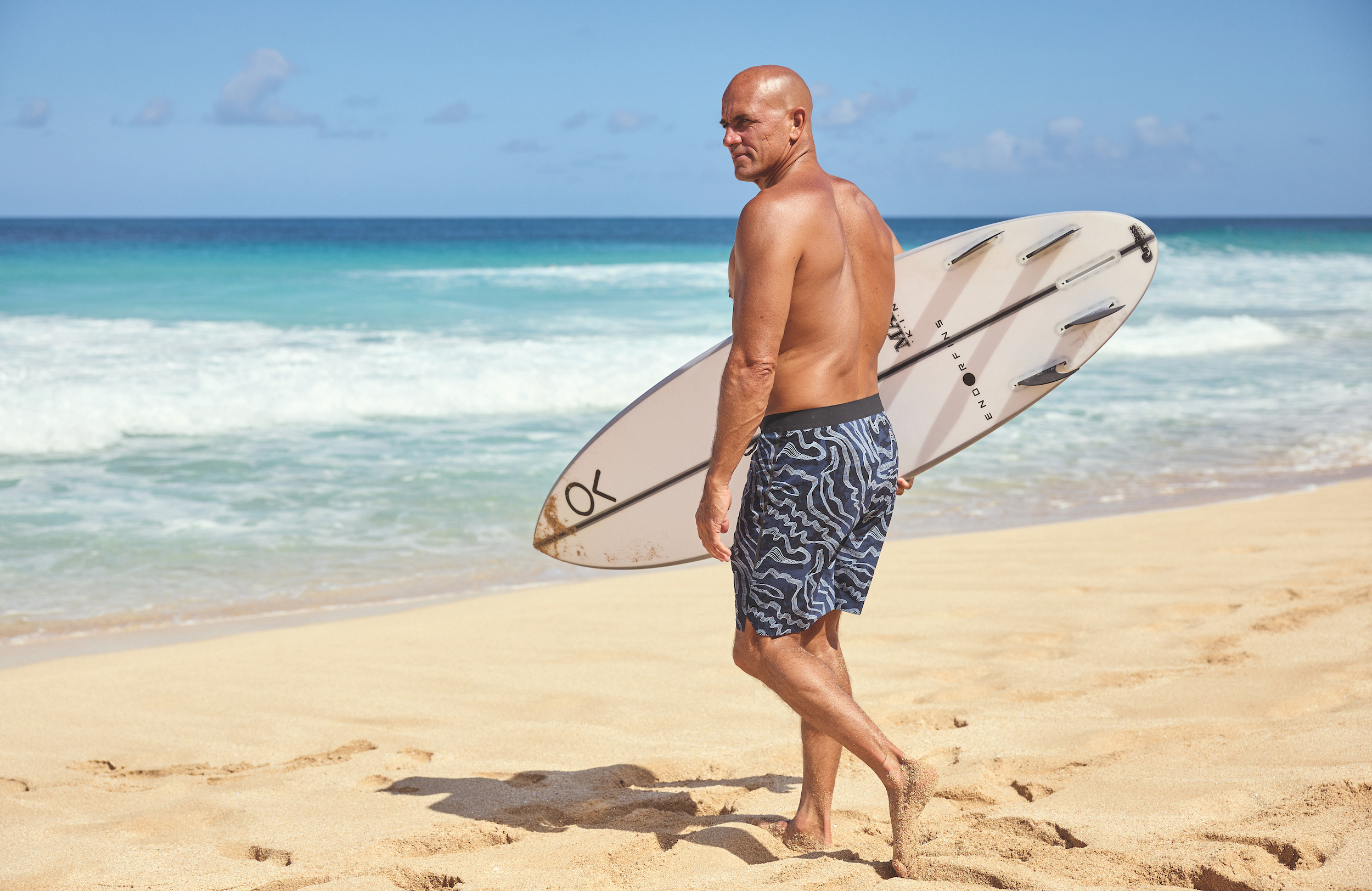The Slater Designs Sci-Fi 2.0 surfboard is the second iteration of a shape that’s carved out a technical, hybrid niche in surfboard design, filling a void in board styles somewhere between a fish … and a performance shortboard.
The board is the brainchild of Daniel “Tomo” Thompson — a household name in surfing revered as one of the world’s most progressive shapers — with input from 11-time world champion surfer Kelly Slater — a man unanimously lauded as the GOAT of surfing-kind, and the driving force behind Slater Designs.
With its unorthodox tail outline, bizarre bottom contour, and chubbier profile, the design prowess of these legends is instantly evident with the Sci-Fi 2.0. But how different does it feel?
After two months spent surfing the Sci-Fi 2.0 in a broad range of wintertime conditions along the Washington coast, as well as a weekend strike mission to San Diego to surf overhead Blacks and Windansea, it’s officially my new magic board. Why? A lot of the board’s unique design components aren’t just for show — they bring power, speed, and whippiness to whatever waves you may encounter. Finally, this board is loads of fun.
In short: The Sci-Fi 2.0 by Slater Designs is the second generation of a hybrid shortboard at the cutting edge of modern surfboard design. Originally shaped by Daniel “Tomo” Thompson and with input from Slater Designs owner Kelly Slater, the Sci-Fi 2.0 implements forward-thinking design nuances in its bottom contour, tail, and foam distribution for a uniquely versatile rig that suits most wave sizes and conditions. One of the most appealing aspects of the Sci-Fi 2.0 is its suitability for a variety of surf styles and skill-levels. It offers an approachable entry-point to shortboarding for intermediate surfers looking to downsize, and a dynamic, high-performance setup for advanced surfers in need of a one-board quiver.
- Board: Sci-Fi 2.0 – 5’9” x 19 3/8" x 2 9/16”
- Volume: 30L
- Testing with (additions)::
- Fins: Roam Performance Thruster
- Traction: Roam 3-piece Pad
- Leash: Roam 6’ Premium
- Wetsuits: Patagonia R5 Hooded Front-zip Wetsuit, Quiksilver 4/3 Everyday Sessions Frontzip Wetsuit
Pros
- Ability to easily catch large and small waves
- User-friendly transition board
- Whippiness in turns
- Great paddle power
- All around quiver-killer, good for most West Coast conditions
Cons
- Unorthodox shape requires getting used to
- A bit unpredictable in bigger surf
- Some technical components are not for beginners
Tester Specs:
- Age: 34
- Stance: Goofy
- Height: 5’8”
- Weight: 165 lbs
- Skill-level: Intermediate
- Years surfing: 22
- Hometown: Half Moon Bay, CA
Slater Designs Sci-Fi 2.0 Review

About the Board
Slater recommends riding the Sci-Fi 2.0 three to four inches shorter than your standard shortboard, so I tested out the 5’9” variation, which at 30 liters of volume, is a considerable step down from the 6’0”, 31.5 liters Rusty I’ve been riding lately.
The Sci-Fi 2.0 carries five fin boxes (available in either FCS2 or Futures), so it can be ridden as a thruster (three fins), quad, or whatever fin combo you fancy. Any experienced surfer attests — a fin setup affects performance almost as much as the board. To minimize variability, I stuck with my tried-and-true fin setup — the Roam Performance Thrusters — which have a long rake and narrow tip to engage well in powerful waves.
For the record, I also used a Roam traction pad, leash, and Tech Board Bag. Roam makes great stuff — it’s simple, affordable, quality and gets the job done.
First Impressions
Paddling out for the first time on a blustery shoulder-high day at Westport, Washington, the board felt smaller under my chest than my usual board, but not in a squirrely way and not at the sacrifice of flotation. Having more volume in a smaller unit made paddling and getting into waves easier than my regular board, and it was quicker to duck-dive as well.
Standing up, the first ride felt a little out of control, but only because I hadn’t adapted to the new setup. I began to understand it more after a few waves, and the more I surfed it, the more fun it got. After a handful of sessions, it noticeably enhanced my surfing.
Design Breakdown

The Sci-Fi 2.0 is most similar to a straight-rail, high-performance fish — a wide board with the widest point forward of center and added foam in the chest to pack more volume into a shorter length than its predecessor. With that, it’s intended to be ridden one inch shorter than the original Sci-Fi.
The 2.0’s fish-like profile carries a fairly flat rocker profile through the mid-section of the board, with exaggerated entry and exit rocker in the nose and tail.
A Futuristic Tail
The most technical asset of the Sci-Fi 2.0 is the tail, which was upgraded from the original Sci-Fi by pulling in the outline and rocker to function better in larger waves. I found that the slightly narrower design still worked well to gain push in small, mushy surf but also didn’t overwhelm me when paddling into more powerful, overhead waves.

The tail outline, which diverges from the rail arc directly aft of the front fins, juts in about a centimeter from the rail line into a combination flier-to-double-bat tail. It’s a complex, unorthodox design intended to drop foam where it’s not necessary, minimizing drag and creating “a release point from the straight rail, so you have a pivot point for your back foot,” according to Tomo.
For me, managing the unique tail in turns was a challenge at first. It felt unruly, and I botched more than a few gouges by over-torquing with too much back-foot pressure, generating a speedier-than-normal swivel. After a couple sessions, I learned to shift weight forward a bit earlier in my turns, and the Sci-Fi 2.0’s pinpoint turning ability became an asset.
Once I understood the hydrodynamics of the tail, it amplified my turns with speed and whippiness and even punctuated some top turns with a bit more fin drift than I’m used to achieving, which felt amazing.
Bottom Contours

Tail shape and bottom contour combine to define the feel of any board, and on the Sci-Fi 2.0, the pairing plays together for more grip in powerful carves than I’ve ever experienced in a shortboard.
That grip stems primarily from a quad-concave on the tail’s bottom side, which exaggerates into deep channels running out the back of the board, effectively creating a tooth-like hold in pivot turns that locks the tail in place as the nose whips around. Its bite also serves well to dump speed, making it easy to slam on the brakes with a little added pressure in the back foot.
Running forward into the nose, the quad concave embeds inside an overarching single concave, allowing the board to plane better on the board’s rails. Tomo likens this effect to having water skis embedded in the rails. I definitely felt the increased sensitivity when driving down the line or transferring from one rail to the other between turns.
Another mention-worthy effect of this bottom contour is the sensation of lift it generates by channeling water down the center of the board to enhance drive and speed. It seemed to lock into the wave face when pumping down the line, with the lift translating to acceleration. In more powerful rail turns, the concave seemed to scoop up water, generating more spray than I’m used to throwing.
Use Cases

The Sci-Fi 2.0 makes a fantastic “quiver killer” for an intermediate surfer like me, surfing great in less consequential, waist-high waves and burlier, one-to-two-foot-overhead waves alike. It also makes for an easy entry point into shortboarding for novice surfers or longboarders looking to downsize.
That said, many of the Sci-Fi 2.0’s technical attributes could be lost on inexperienced surfers. If it were me, I’d opt to gain experience on a standard fish before taking on the Sci-Fi 2.0. In contrast, the futuristic design shines especially bright under the feet of expert surfers, particularly the likes of Slater and Timmy Reyes, like in this video.
ECOBOARD Certified

Sustainable Surf established the ECOBOARD Project to measure sustainable manufacturing practices for the board-building community. When a surfboard dons the ECOBOARD stamp on its tail, it means that the ECOBOARD nonprofit has vetted it for a reduced carbon footprint. Slater Designs (and other certified boards) uses recycled or up-cycled materials and processes that reduce toxicity in manufacturing.
As with most Slater Designs and Firewire surfboards, the Sci-Fi 2.0 bears the “Level One” stamp. This indicates that it uses a plant-based, low-VOC resin and is made in a factory audited by Sustainable Surf. Altogether, the ECOBOARD lamination represents a 30-pound reduction in carbon footprint compared to surfboards built from traditional materials.








